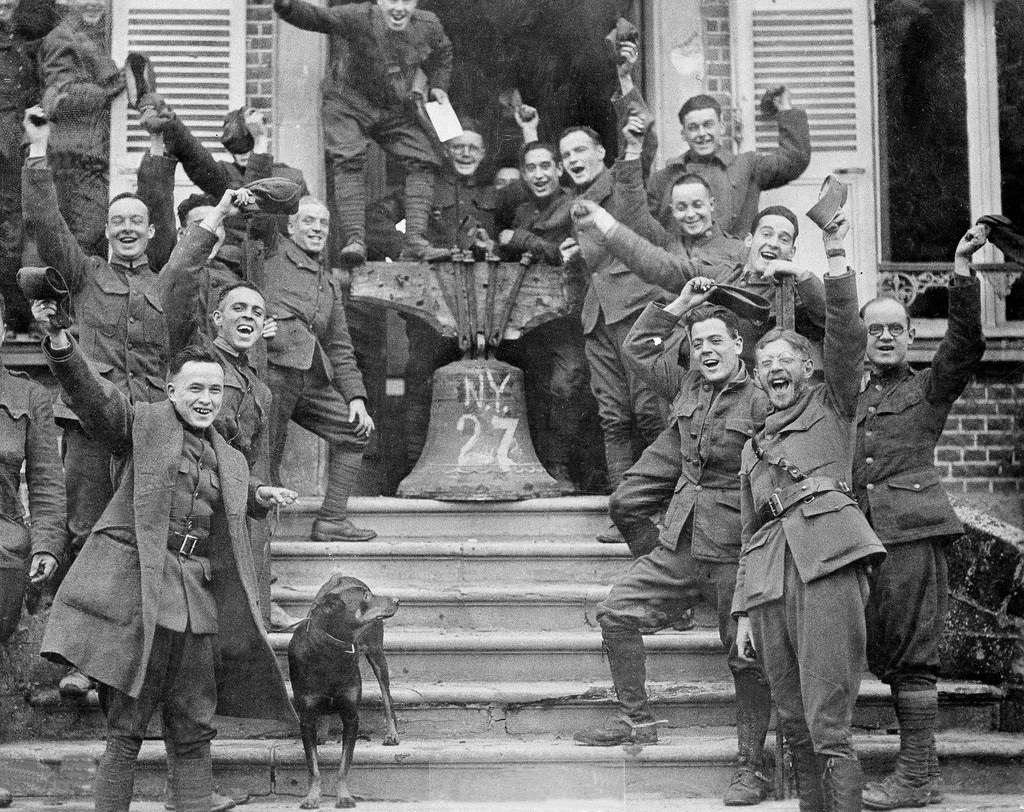When Did World War I End?
Today is the centennial Armistice Day, remembered as the day the Great War ended. In a military sense it did, but as a matter of U.S. domestic law, it dragged on for three more years.

Published by The Lawfare Institute
in Cooperation With

Today is the centennial Armistice Day, remembered as the day the Great War ended. In a military sense it did, but as a matter of U.S. domestic law, it dragged on for three more years.
On Nov. 11, 1918, the Allies and Germany signed the armistice that ended the remaining fighting on the Western Front. It went into effect on the 11th hour of the 11th day of the 11th month. Often an armistice is only a pause, or a cease-fire pending further negotiations, but this was a much more dramatic and decisive event. Two days earlier, German Kaiser Wilhelm II had abdicated. Under the armistice terms, Germany had to withdraw its troops and hand over the bulk of its navy. President Woodrow Wilson declared that day to Congress: “The war thus comes to an end, for, having accepted these terms of armistice, it will be impossible for the German command to renew it.”
Mission accomplished, right? Sort of.
Although Germany had been crushed militarily at that point, President Wilson had taken the country to war with a boldly ambitious set of international security and diplomatic aims. He said we were making the world safe for democracy. Wilson viewed as essential to American security the replacing of traditional European balance-of-power politics with a new system of diplomatic rules, ideals and collective responses to threats. He had requested a war declaration from Congress on those terms, and he reiterated and expanded on them during the war. This ambitious, global agenda—and the Senate’s rejection of it in the form of the Treaty of Versailles and League of Nations—greatly complicated the task of determining when full peace was achieved and, therefore, when the expansive war powers of Congress and the president were required to retract back to peacetime form.
The question of when World War I ended as a legal matter was no mere formality, because President Wilson continued to exercise wartime legislative delegations after the armistice, and Congress even continued to pass new legislation pursuant to constitutional war powers. This included, for example, alcohol prohibition laws that Congress passed as war measures on the basis of constitutional war powers after the armistice. The Supreme Court later upheld these laws as valid exercises of war powers.
In Hamilton v. Kentucky Distilleries & Warehouse, Co., the Supreme Court in 1919 held that the War-Time Prohibition Act, which banned the sale of liquor in order to preserve national manpower and which had become law a week and a half after the November 1918 armistice, was a valid exercise of the war power. After Congress expanded prohibition further in October 1919, the court again sustained it as a valid exercise of war powers in the 1920 case Ruppert v. Caffey.
One can hear faint echoes of these World War I controversies and precedents in recent Guantanamo habeas litigation regarding the seemingly endless war with al-Qaeda and its offshoots, as waged pursuant to the 2001 Authorization for Use of Military Force. In Al-Alwi v. Trump, for example, the D.C. Circuit held earlier this year that the conflict in which petitioner is detained has not ended, and nor therefore has the domestic law authority to detain him.
So when did World War I finally end legally? As a matter of domestic law, President Warren G. Harding signed in March 1921 Congress’s “Joint Resolution Declaring that certain Acts of Congress, joint resolutions, and proclamations shall be construed as if the war had ended and the present or existing emergency expired.” He later signed a joint declaration ending the war with Germany in July 1921. As a matter of international law, a bilateral peace treaty was also signed in 1921, and ratifications were exchanged in Berlin on Nov. 11, 1921—exactly three years after the armistice.


.png?sfvrsn=bd249d6d_5)


